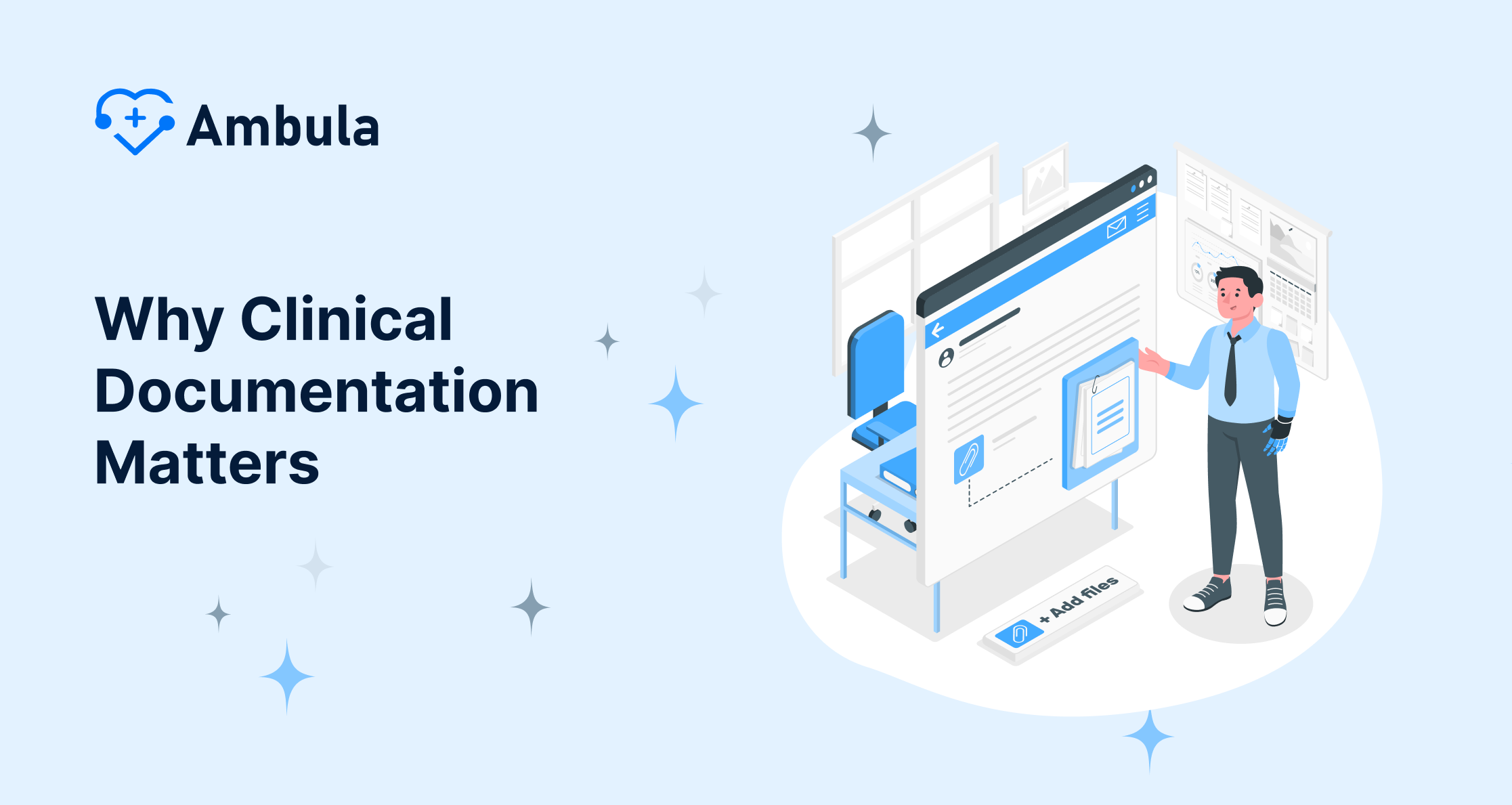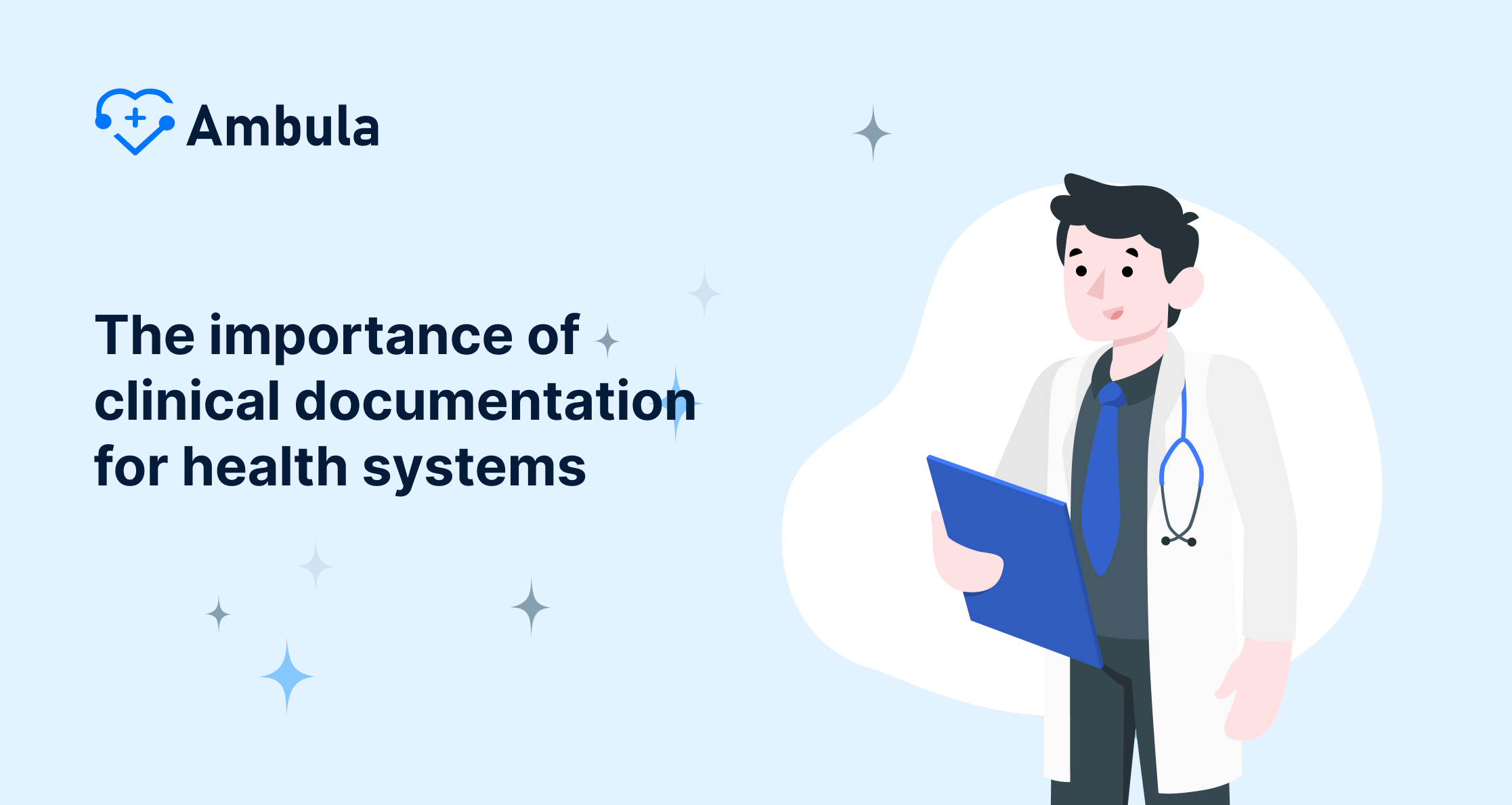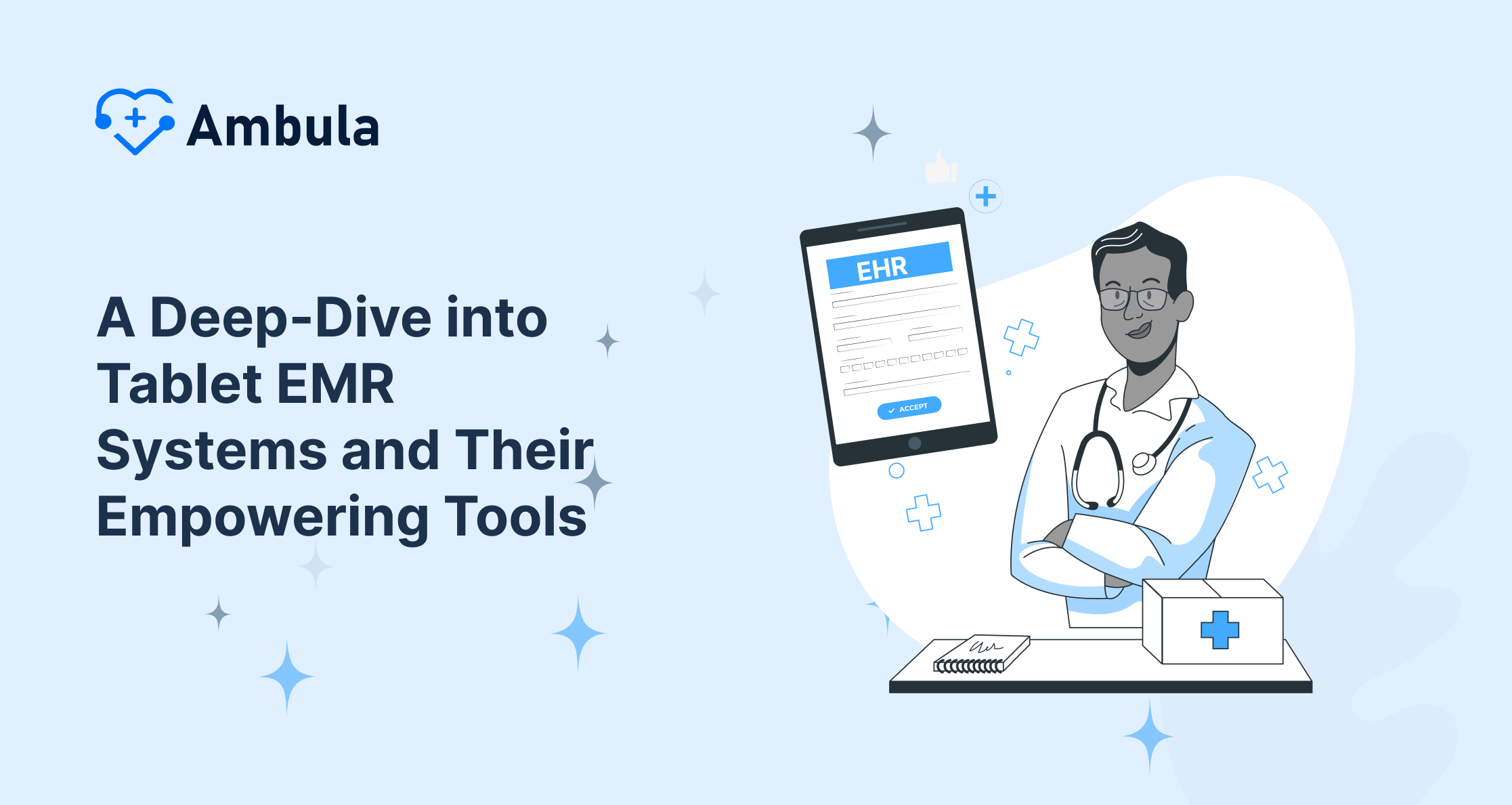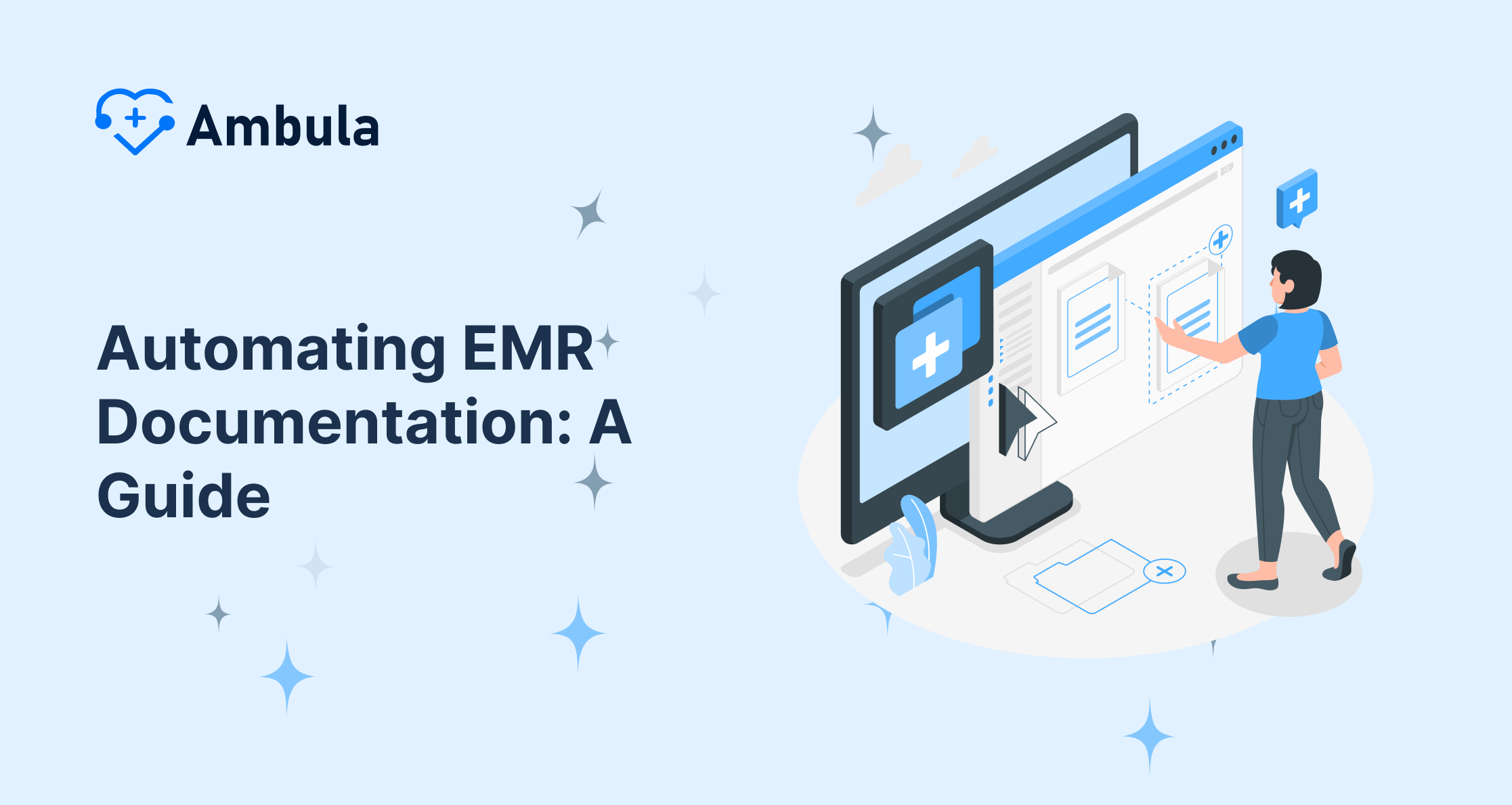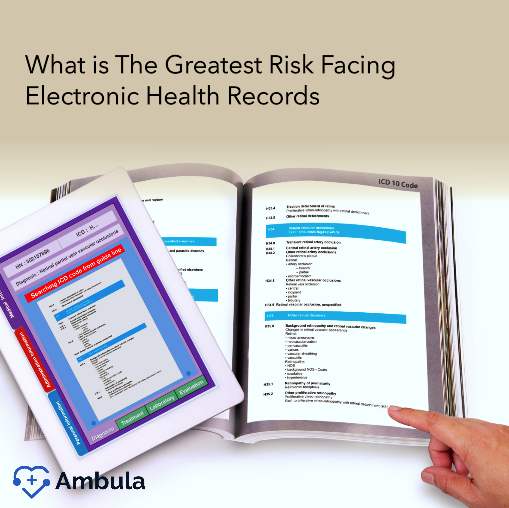Clinical documentation has an impact on patient care posing a challenge for most healthcare professionals. As doctors and nurses realize that poor clinical documentation leads to insufficient reimbursement, time waste, and subpar patient care, they started looking for a tool to enhance their documentation.
To improve patient care is our goal in the healthcare field. So, it’s clear that to boost patient safety and care quality requires using some patient-focused approaches, and clinical documentation is one of these.
Why Clinical Documentation Matters
Let’s get started. Clinical documentation isn’t just about checking boxes or completing forms. It forms the core of effective patient care. So why should clinical documentation matter to you as a healthcare professional?
- Patient Safety First: Think about this. Good clinical documentation makes sure every drug, treatment, and diagnosis gets recorded right. This cuts down on medical mistakes so your patients get the care they need.
- Seamless Communication: Ever played ‘telephone’? Information can get mixed up when it’s passed along. Clear documentation makes sure every doctor and nurse looking after a patient knows what’s going on. No more guessing or trying to figure out someone else’s scribbles.
- Legal Shield: In our lawsuit-happy world, having detailed and thorough records can protect you best if someone claims you’re liable. It’s like keeping a play-by-play account of every choice and step you take.
- Optimized Reimbursement: Let’s be real: healthcare is also about making money. Good record-keeping makes sure you get paid the right amount for what you do through smooth billing and claim handling. Not too much, not too little.
- Quality Care Metrics: As care based on value grows, quality measures rule. Correct record-keeping helps to track how patients do making sure you always give top-quality care as patients move through the system.
- Professional Development: Regular documentation gives you a chance to think about your work. It helps you learn, improve, and sharpen your skills through mental exercises.
Here’s something to think about: A study in the Journal of Patient Safety found that proper record-keeping helps improve patient care cutting down bad outcomes by up to 30%. That’s a big deal, isn’t it?
So when you’re writing notes or updating a patient’s electronic health record, keep this in mind: it’s more than just paperwork. It’s a key tool to make sure your patients get the best care possible. And isn’t that why you chose this career to begin with?
Clinical documentation to improve patient care
We previously discussed how does an EMR improves patient care, and today we will focus on clinical documentation to improve patient care. But first, what is the clinical documentation definition and why is documentation important in healthcare?
Clinical documentation is the foundation of a patient’s medical record. It captures patient care from admission to discharge, including diagnoses, treatment, and resources used during their care. This documentation in healthcare is critical for continuity of care.
When healthcare documentation is complete, precise, and correct, uncertainty is avoided. Additionally, the communication between units of healthcare providers improves.
Whereas incomplete or incorrect documentation, on the other hand, can have a negative impact on the quality of patients’ treatment. Which results in medication mistakes, longer lengths of stay, and improper (or no) post-discharge patient follow-up, as well as greater readmission rates and increased care costs.
Check out these articles after you’re done
The importance of clinical documentation for health systems
Before we jump into clinical documentation to improve patient care and how real-time data can improve patient care, we need to showcase the importance of clinical documentation for health systems.
Hospitals and health systems trying to survive and thrive under value-based reimbursement recognize that good clinical documentation is key to ensuring quality care and optimizing revenue cycle management through accurate billing.
On the same note, clinical documentation specialists are trained to have a firm grasp of the clinical details of high-quality care and to be able to spot gaps in electronic health record charting. Consequently, natural language processing and machine learning can help in big ways, but good CDI depends on good person-to-person communication and collaboration.
Why is clinical documentation improvement important?
Care to know why clinical documentation to improve patient care is very important? Well, the clinical documentation improvement process aids in “ensuring that the events of the patient contact are appropriately documented”. Additionally, the electronic health record properly represents the services that were rendered as part of service delivery.
So, it ensures that all patient care team members have the patient information necessary to treat the patient properly.
How does patient documentation contribute to quality improvement?
It documents patient care from admission through discharge, including diagnosis, treatment, and resources spent. When documentation is thorough, precise, and correct, uncertainty is avoided, and communication between healthcare professionals improves.
Clinical Impact of CDI
Undoubtedly, more and more hospitals are improving at CDI through clinical documentation improvement programs, but there are still plenty of tips and tricks for improving it. Seven characteristics should be seen within clinical documentation for it to be recognized as high documentation quality.
- Clear.
- Consistent
- Legible
- Complete
- Reliable
- Precise
- Timely
What are the five characteristics of good medical documentation?
- Accuracy of the medical record: It should reflect the source’s data.
- Accessibility of the medical record: Accessibility relates to the ease of retrieving data and can be affected by several things. The way the medical records are organized and printed makes a huge difference.
- The comprehensiveness of data: All required components should be captured in the record and imply that the chart is complete. Missing pages or records slow the progress of the review.
- Consistency of information in the medical record: The consistency in documentation of a medical record refers to the fact that the data are reliable and that the integrity of data has not been corrupted regardless of how often or in what way the data have been retrieved, viewed, stored, or processed.
- Timeliness of information: The timing of documenting the data is a key component of data. Timely documentation in healthcare records should reflect current information documented as close to real-time as possible.
Challenges in Clinical Documentation
Alright, let’s get into the nitty-gritty. Clinical documentation, while crucial, isn’t always a walk in the park. As a healthcare professional, you might have faced a few clinical documentation challenges. So, what are these challenges that make documentation a tad bit tricky?
- Time Constraints: Let’s face it; your day is packed. Between patient consultations, surgeries, and administrative tasks, finding the time to document every detail can be daunting. And rushing through it? Well, that’s a recipe for errors.
- Complexity of Medical Jargon: Medicine has its language. While you’re fluent in it, ensuring that every term, every diagnosis, and every procedure is recorded accurately can be a challenge, especially with evolving medical terminologies.
- Interoperability Issues: Using different electronic health record (EHR) systems? It’s like trying to fit a square peg in a round hole. Transferring data between systems without hiccups isn’t always smooth sailing.
- Training and Adaptability: New software? Updated guidelines? Sometimes, keeping up with the latest in documentation practices feels like chasing a moving target. And let’s not even talk about the learning curve with new tech.
- Patient Non-Compliance: You can lead a horse to water, but you can’t make it drink. Similarly, you can advise a patient, but you can’t always ensure they’ll follow through. Documenting such instances where patient non-compliance affects outcomes can be tricky.
- Data Overload: There’s no shortage of data in the digital age. But sifting through heaps of information to document what’s relevant? That’s a challenge in itself.
A quick stat to chew on A study by the Annals of Internal Medicine found that for every hour physicians spend with patients, they spend nearly two hours on EHR and desk work. That’s a lot of time on documentation, right?
So, while clinical documentation is undeniably essential, it has challenges. But remember, every challenge is an opportunity in disguise. And with the right tools, strategies, and mindset, you can turn these challenges into stepping stones for better patient care. After all, that’s the end game, isn’t it?
The Future of Clinical Documentation
Alright, let’s hop into our time machine and peek into the future. Clinical documentation, as you know it, is evolving. And for you, the forward-thinking healthcare professional, it’s essential to stay ahead of the curve. So, what’s on the horizon?
- Artificial Intelligence (AI) and Machine Learning: Imagine a world where AI assists in real-time, suggesting diagnoses or even catching potential errors as you document. It’s not sci-fi; it’s the near future. Machine learning algorithms are getting smarter, making documentation more efficient and accurate.
- Voice Recognition: Picture this: you’re speaking to a patient, and as you converse, voice recognition software transcribes the entire consultation. No more typing or scribbling notes. It’s hands-free, hassle-free, and a game-changer.
- Interconnected EHR Systems: The dream? Seamless integration. In the future, EHR systems will communicate effortlessly, ensuring patient data is accessible no matter where they seek treatment.
- Predictive Analytics: Using past data to predict future outcomes? That’s where predictive analytics comes in. It’ll give you insights into potential health risks, allowing for proactive care.
- Enhanced Security: With cyber threats on the rise, the future of clinical documentation will prioritize security. Advanced encryption, biometric access, and blockchain are just a few innovations on the horizon.
- Patient-Involved Documentation: Empowering patients to participate actively in their care is the way forward. Future systems might allow patients to add to their records, ensuring a holistic view of their health.
A stat to mull over: According to a report by Stanford Medicine, by 2025, more than 75% of medical interactions will involve some form of AI assistance. That’s a paradigm shift, right?
So, as the winds of change blow, it’s clear that the future of clinical documentation is bright, innovative, and geared towards making your life easier. Embracing these advancements will streamline your workflow and enhance patient care. And at the end of the day, that’s what it’s all about, isn’t it?
Long story short
Finally, a clinical documentation program will focus on patient care quality and quality. As well as on outcome measurements, statistics, and research. The first step in defining the need for clinical documentation improvement is understanding the documentation and coding gaps. Ideally, the next steps can then be initiated to ensure proper education, engagement, and process. Ultimately, the goal is improved healthcare.
To learn more about this subject, you can call the Ambula Healthcare team: at (818) 308-4108. And now do you know why is patient engagement important?

